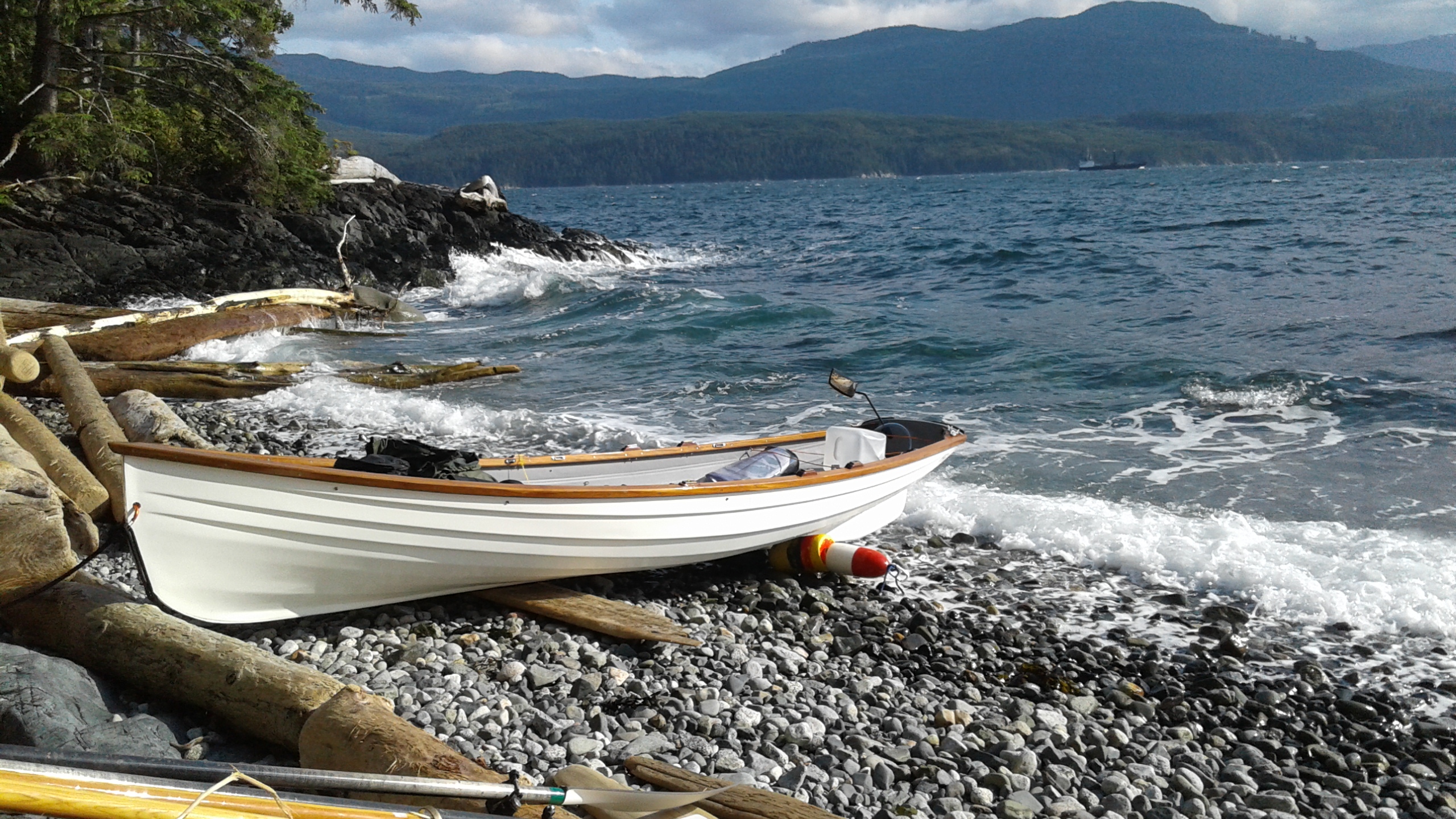Throughout our years of building and selling boats, we have heard many customers tell us their big dreams and adventures they plan to go on. Sometimes the dreams are so big that they seem a tad unrealistic… so it’s always a delight when we hear back from them only to find they did what seemed like the impossible.
Ken Poskitt did just that when he traveled 1400 km [870 miles], from Victoria BC to Alaska.
The Race to Alaska advertises the distance from Victoria to Ketchikan as 700 nautical miles, or 840 miles. The route Ken planned to take was almost 900 miles. The frequent 3ft. waves added about 20% more distance, making that 900 miles an understatement. Certainly GPS measurements between fixed points will fail to capture the extra distance travelled.
“My trip from Victoria to Ketchikan, Alaska can be reduced to simple numbers; distance, speed, and time required to cover the distance…but these numbers do not capture the magic of the journey and are not reality in themselves, but reflect the magnitude of the challenge. Add in weather conditions, wind and tides and the picture gets clearer; the trip really was an odyssey.”
As much as we would have liked Ken’s journey to Alaska to have been easy, he was faced with harsh winds and varying weather conditions, and of course, one troublesome blister to top off the experience. The trip took 28 days, starting May 16th and finishing June 13th.
“During this span, I rowed for 22 days. I took 6 rest days when I visited friends, replenished food supplies and above all, showered! I encountered 20 days of rain and 15 morning or afternoon half days of headwinds greater than 30 mph. My GPS tracker was programmed to tabulate these; 1400 km [870 miles] travelled at an average of 5km [3 miles] per hour, over 280 hours of rowing. I was able to row up to 16 hours per day when conditions dictated and remained in good condition.”
At the end of his letter Ken talks more about the equipment that was used and how well our boat helped him through the journey.
“ I want you to know that my Whitehall performed admirably and was the perfect choice for this trip. The lightness of the fiberglass/Kevlar hull allowed me to easily beach the craft and roll it up the beach on crab trap floats tied in a line on a rope. I then converted the boat to a ‘tent’ and slept inside the entire trip. I never bothered to use the tent I carried. Once your standard boat cover was attached I had a very comfortable place to read and sleep.
The boat’s seaworthiness was progressively tested. Indeed, using the Concept II sculling oars that I purchased from you, I found I could tackle and overcome 35 mph headwinds. Feathering them forward reduces the wind resistance and then the headwind also drove the oar into the stroke. I used the flexibility of the boat to vary from a standard rowing technique to sculling with the sliding seat. I had replaced your standard straps on the footplate with the anchoring system used on Concept II’s ergometers with great success. “
Ken Poskitt did something that may seem nearly impossible to many. Although Ken admits the challenges of the trip and how at times he wanted to give up, he is quick to explain that this journey was not about destination.
“The real goal in this journey is about taking my time… the challenge is appreciating every moment along the way that’s what I’m trying to teach myself…The people encountered, sights and surprise events are all beyond time and distance. They are timeless and blessings beyond measure.”
“ I want you to know that my Gig Harbor WhiteHall performed beyond my expectations and was masterfully crafted for the Odyssey I undertook. I would recommend this craft to anyone who asked! Thanks again!”
Glad we could help, Ken!
Click here to read Ken’s full letter
P.S. Be sure to check out more of Ken’s story in the recovered Painter’s lodge article and learn how his boat got the name, Rippingale!









